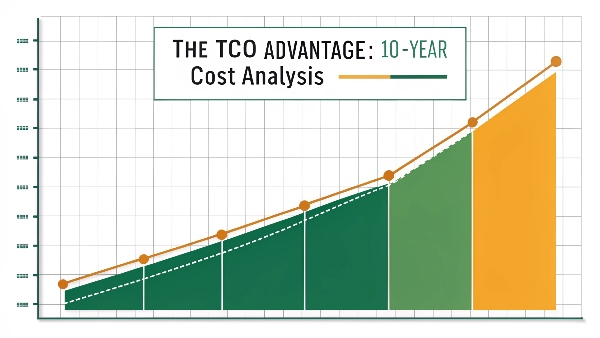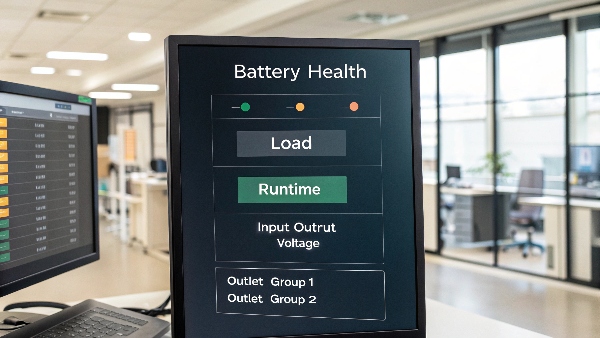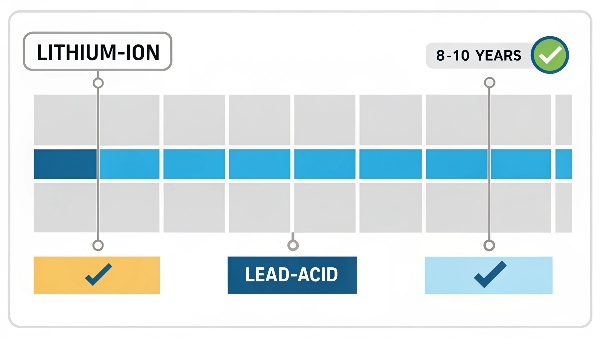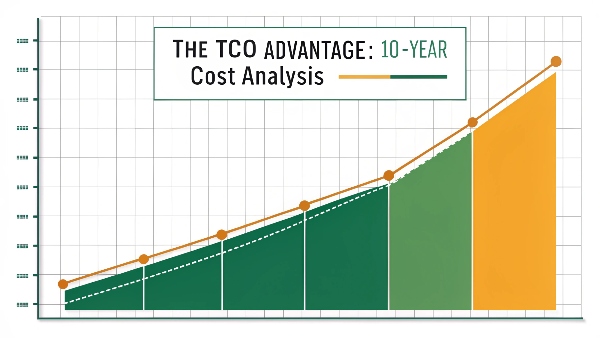Worried about UPS failures and rising maintenance costs? A simple power outage can halt your business. Smart Lithium-ion UPS offers a smarter, more reliable long-term solution.
A Smart Lithium-ion UPS combines a long-life lithium battery with intelligent network management. This allows for remote monitoring, automated alerts, and graceful shutdowns, providing superior protection and a much lower total cost of ownership (TCO).

Transition Paragraph:
I've been in the UPS manufacturing business for over ten years here at Daopulse. In the beginning, a UPS was just a "dumb" box with a battery. But our clients' needs have evolved. A procurement manager like Mr. Li at a hospital can't just hope the power stays on. He needs to know the exact status of his backup systems across the entire facility, 24/7. This is why the conversation has shifted from just backup power to intelligent power management.
Are Lithium-Ion UPS Really Worth the Higher Initial Cost?
The upfront cost of a lithium-ion UPS seems high. You worry about your budget. But cheap lead-acid replacements every few years add up quickly, costing more in the long run.
Yes, they are absolutely worth it for critical applications. The higher initial price is offset by a lifespan 2-3 times longer and zero maintenance. This results in a significantly lower Total Cost of Ownership (TCO) over the unit's life.

Dive deeper Paragraph:
Let's break down the Total Cost of Ownership (TCO). A system integrator might look at two units for a client. Unit A (lead-acid) costs $500. Unit B (lithium-ion) costs $900. The initial choice seems obvious. But Unit A's battery will need to be replaced in year 3 and again in year 6. Each replacement costs $150 for the battery plus two hours of a technician's time. Over ten years, the lead-acid unit's real cost skyrockets. The lithium-ion unit, however, just keeps working. Its battery is designed to last for the entire service life of the UPS, which is 8-10 years. You buy it once and that's it. For special applications, this becomes even more critical. Lithium-ion UPS are very economical and reliable in special fields. Think of a remote telecom tower or a sensitive medical lab. Sending a technician out for a battery swap is expensive and disruptive. The "set it and forget it" nature of lithium-ion isn't a luxury; it's a core economic and reliability advantage.
| Cost Factor over 10 Years | Standard Lead-Acid UPS | Smart Lithium-Ion UPS |
|---|---|---|
| Initial Purchase | $500 | $900 |
| Battery Replacements | 2-3 ($300 - $450) | 0 |
| Labor for Replacement | 2-3 times (~$200) | $0 |
| Total Cost (TCO) | ~$1000 - $1150 | $900 |
What's the Real Difference Between a Standard UPS and a Smart-UPS?
Your UPS just sits there. You have no idea if it's healthy or ready for an outage. When it fails, it's already too late to do anything about it.
A standard UPS just provides backup power. A Smart-UPS adds intelligence. It connects to your network, allowing you to monitor its status, get alerts, run diagnostics, and control it remotely through software. It's proactive, not just reactive.

Dive deeper Paragraph:
The "Smart" in Smart-UPS1 refers to its communication capabilities. These units have a network management card or a USB port that connects to a computer or your network. This connection is a game-changer. It allows the UPS to talk to management software.
With this software, a system integrator can:
- See Real-Time Status: Check the battery charge, current load, and input voltage from a web browser anywhere in the world.
- Receive Proactive Alerts2: Get an email if the utility power fails or if the battery health is degrading. This gives you time to act before a crisis.
- Perform Graceful Shutdowns3: Configure the software to automatically and safely shut down connected servers before the battery runs out. This prevents data corruption.
- Control Outlets Remotely: Reboot a frozen server or router by remotely turning its specific power outlet off and on again, without having to be on-site.
For any business with more than one computer, this isn't a luxury. It's essential for efficient IT management and preventing data loss.
How Long Can You Realistically Expect a UPS Lithium Battery to Last?
You replace your UPS batteries every three years like clockwork. The downtime and cost are frustrating. You need a battery that you can install and forget about for years.
A UPS lithium-ion battery, specifically the Lithium Iron Phosphate (LiFePO4) type we use, has a life expectancy of 8 to 10 years under normal operating conditions. This is more than double the 3-5 year lifespan of a typical sealed lead-acid (SLA) battery.

Dive deeper Paragraph:
The 8-to-10-year lifespan is not just a marketing number; it's based on the battery's fundamental chemistry and design. The LiFePO4 chemistry used in our high-quality UPS systems is incredibly stable. It can handle many more charge-and-discharge cycles than lead-acid can. A lead-acid battery might handle 300 cycles, while a LiFePO4 battery can handle over 2,000 cycles. It's also much more resilient to temperature. A hot server room can cut a lead-acid battery's life in half, but a lithium-ion battery performs much more consistently.
The key to this longevity is the integrated Battery Management System (BMS). This small electronic brain inside the battery pack constantly monitors the health of every cell. It prevents overcharging and over-discharging, which are the main killers of batteries. A lead-acid battery has no such protection. It's a simple, passive component. A lithium-ion battery is an active, self-protecting system designed for a long, maintenance-free life.
Why Are Lithium-Ion Batteries Essential for Smart-UPS Technology?
You hear "lithium" and think of phone batteries. You're hesitant to trust it for your critical server. Is this technology truly ready and safe for this important role?
Yes, and they are essential for a Smart-UPS. The battery's internal brain, the BMS, provides the detailed data (charge state, health, temperature) that the "smart" network management features rely on for accurate monitoring and alerts.

Dive deeper Paragraph:
This is where the two technologies—Smart-UPS and lithium-ion—come together perfectly. A Smart-UPS needs good data to be truly smart. A lead-acid battery can only provide a very basic voltage reading. From that, the UPS has to guess the remaining runtime and health. It's often inaccurate.
A lithium-ion battery with its integrated BMS, however, is a source of rich, precise data. The BMS knows the exact state of charge, the temperature, the number of cycles it has been through, and its overall health. It communicates all of this to the Smart-UPS controller. This allows the Smart-UPS to display an incredibly accurate runtime, down to the minute. It can give you a precise "replace battery" warning months in advance. It makes the "smart" features truly intelligent and reliable. You cannot have a truly modern, intelligent power management system built on old, unintelligent battery technology. The two must go hand-in-hand.
Conclusion
Smart Lithium-ion UPS systems offer lower total cost, a much longer lifespan, and intelligent network control. For specialized or custom applications, if you have customization needs, welcome to contact us.
-
Explore the features of Smart-UPS to understand how it enhances IT management and prevents data loss. ↩
-
Learn how proactive alerts can help you manage power issues before they escalate, ensuring business continuity. ↩
-
Discover the importance of graceful shutdowns in protecting data integrity and preventing server issues during power outages. ↩

